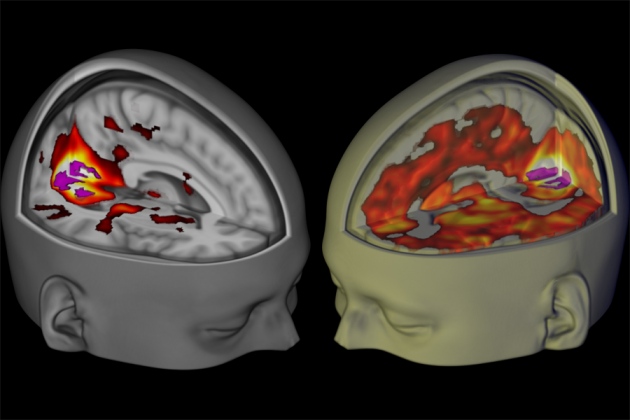So this new study is from the scientists who did the famous MRI LSD studies:
Right brain on LSD shows much great visual cortex connections with the rest of the brain!
Now we know WHY!! It's a particular type of serotonin receptor network.
On the other hand, within some important brain networks, such as the neuronal networks that normally fire together when the brain is at rest, which is sometimes called the ‘default mode’ network, we saw reduced blood flow — something we’ve also seen with psilocybin — and that neurons that normally fire together lost synchronization. That correlated with our volunteers reporting a disintegration of their sense of self, or ego.
He found that communication between the parahippocampus [a brain region important in memory storage] and the visual cortex [which processes information input from the eyes] is reduced when you take LSD. But when you hear music as well, the visual cortex receives more information from the parahippocampus, and this is associated with increases in ‘eyes-closed’ imagery and personal memories. So music enhances the LSD experience and might be important in therapeutic settings.And so Musical Synesthesia means listening to sounds activates the visual cortex:
While results from our initial study reported herein showed a similar trend, our measurements also revealed a remarkable pattern of auditory activations in areas of the brain conventionally associated with visual perception. Those intriguing, unanticipated results were suggestive to us of synesthesia, in which a person sees colors when hearing musical notes (Rizzo & Eslinger, 1989; Ward et al., 2006). Thus, we were motivated to perform two more sets of measurements to more specifically localize the responses within each subject’s visual cortex and to test whether these responses were restricted to music or also extended to other kinds of musical and non-musical auditory stimuli. The results of these subsequent studies confirm the presence of strong auditory activations within extrastriate visual areas. These synesthesia-like activations may well be related to the vivid visual imagery our participants with WS describe when listening to music‥and so the synesthesia can be posited to form from 2 main causes:
One mechanism posited by the “cross-activation” theory of synesthesia states that functionally distinct brain regions, such as the auditory and visual cortices, possess aberrant neural connections in individuals with synesthesia, as the result of failure of pruning at some point in development (Maurer, 1993; Baron-Cohen et al., 1993). A second theory posits “disinhibited feedback,” whereby functional segregation of brain regions (due to top-down inhibitory processes that strengthen during the course of development) is unusually weak in individuals with synesthesia (Grossenbacher & Lovelace, 2001). While these theories are often treated as competing, they need not be mutually exclusive; indeed, both of these processes could be at work in the same individual or in a group that shares similar sensory phenomena.And this is what meditation does!!

